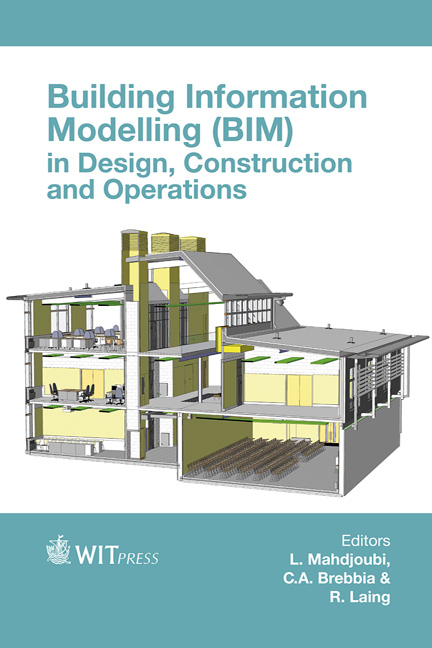Building Information Modelling (BIM): The Impact Of Project Attributes Towards Clients’ Demand In BIM-based Project
Price
Free (open access)
Transaction
Volume
149
Pages
11
Page Range
59 - 69
Published
2015
Size
308 kb
Paper DOI
10.2495/BIM150061
Copyright
WIT Press
Author(s)
N. A. H. Hadzaman, R. Takim, A. H. Nawawi
Abstract
Building Information Modeling (BIM) is a systematic process used to model information involving the use of computer-generated (n-dimensional) software to simulate the planning, design, construction, and operation of a building. Currently, BIM technology is an important approach used by most project clients (public and private) to boost project effectiveness in terms of time, cost and quality of construction projects to meet client demand. However, previous studies showed that BIM-based project implementation in Malaysia faces greater challenges due to project attributes that causes low demand of project clients to adopt BIM. Hence, the purpose of the paper is to investigate the impact of project attributes towards client demand by adopting BIM across project life cycle. A cross-sectional survey was conducted in Malaysia among the three project stakeholders: the public sector, private sector, and contractors using BIM for their projects. Seven (7) significant project attributes (i.e., feasibility, definition, duration, project location, objectives, size and type) and three (3) triangle of client demand (i.e., time; cost; quality) were subjected to Parametric Pearson Correlation. The results showed that there exist a significant relationship between the project attributes and client demand. The results suggest that project clients (public and private) should take a consideration of project attributes in fulfilling the client demand at the early stage of project commencement to maximize the BIM benefits to other stages of construction.
Keywords
attribute, Building Information Modeling (BIM), client demand, Malaysia





